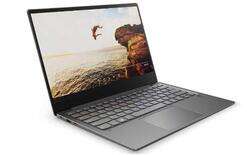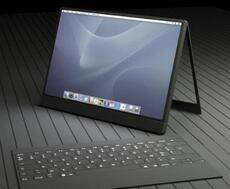Laptop Buying Tips
Laptop computers have become a necessary tool for everyone's study and work. Second only to mobile phones, they play a very important role in our lives. However, like most electronic products, the purchase of a laptop requires some basic knowledge. Or else it will be confused in the face of numerous parameters and models. So we need to understand and learn some hardware knowledge.
1) Intel Core :
(1) CPU series: i9>i7>i5>i3 (laptop platforms are mainly i5 and i7). Note that this performance order is only true when compared with the same generation and type of processors.
(2) CPU algebra: i5 and i7 are followed by a bar, and the first or first two numbers after the bar are algebra. For example, i5-9300H is the ninth generation, and i5-10210U is the tenth generation.
(3) CPU type: marked at the end of the CPU model. It divided into low-voltage version and standard voltage version. Low voltage version of general performance, but low power consumption and little heat. Mainly used for light and light notebook computers. Standard compression version of the performance is strong, but the power consumption is high. Mainly used for game laptop.

2. GPU
Used for image processing, such as playing large games, rendering video effects.
(1) Kernel display/set display: the graphics card function is integrated in the CPU, without independent graphics card. The performance is weak, so it cannot play large games. But it uses less power and lasts longer, making it ideal for office laptops.
(2) Independent graphics card: Mainly designed by NVIDIA and AMD. But at present, the laptop display is mainly based on NVIDIA.
MX450 and MX350 are the mainstream entry graphics cards used in light and thin notebook computers. And they slightly better performance than core display.
Game laptop display: performance sort: RTX2080 SUPER > RTX2070 SUPER > RTX2070 > RTX2060 > GTX1660 Ti > GTX1650 Ti > GTX1650
3. The memory
Memory after so many years of reform from one generation to four generations have experienced a lot. The current mainstream or four generations of memory, both frequency and price are very suitable. If your budget is adequate, you should choose 16G. If your budget is insufficient, you should choose at least 8G. Those of you who are interested can take a look at the concept of dual channel memory.

4. The hard disk
There are mechanical hard disks (HDDS) and solid state hard disks (SSDS).
Make sure you have a solid-state drive. If you don't store many data, 512 gigabytes will do. If you have a good budget, you can choose 1T or larger. Some computers have extra hard disk bits for later installation. In addition, the need to store too many data can also be externally removable hard disk.
5. The screen
(1) According to the material, it is divided into IPS and TN screen. Make sure you have an IPS screen.
(2) At least 1080P resolution.
(3) Gamut: the range of colors that can be displayed on the screen
High gamut: 100%ARGB / 100%sRGB / 72%NTSC
Low gamut: 45%NTSC
Refresh rate: The screen of ordinary laptop is 60Hz. Some game laptops adopt the esPORTS screen with high refresh rate. It is aiming to reduce the tearing of the picture during the game and make the look and feel smoother.
Once we understand these parameters, we can choose the key points from them. For example, we can reduce the budget on the hard disk to increase the budget on the memory. Each parameter is suitable for their own. And then according to the needs of the comparison screening of the market laptop to choose. And the right fit is the best.